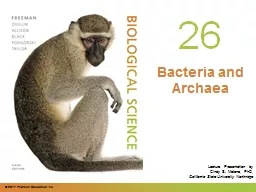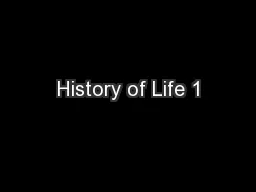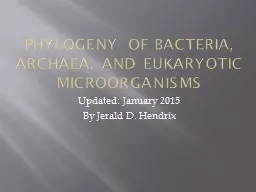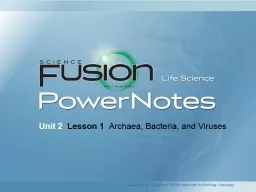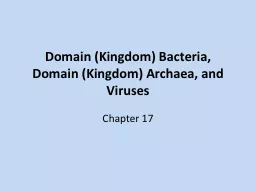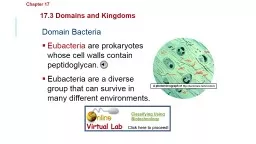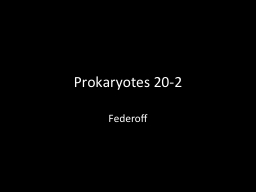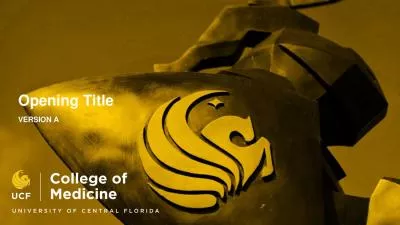PPT-0 Bacteria and Archaea Chapter 26 Opening Roadmap.
Author : natalia-silvester | Published Date : 2020-04-04
2017 Pearson Education Inc Introduction Bacteria and Archaea Are two of the three largest branches on the tree of life Third major branch domain is Eukarya
Presentation Embed Code
Download Presentation
Download Presentation The PPT/PDF document " 0 Bacteria and Archaea Chapter 26 Open..." is the property of its rightful owner. Permission is granted to download and print the materials on this website for personal, non-commercial use only, and to display it on your personal computer provided you do not modify the materials and that you retain all copyright notices contained in the materials. By downloading content from our website, you accept the terms of this agreement.
0 Bacteria and Archaea Chapter 26 Opening Roadmap.: Transcript
Download Rules Of Document
" 0 Bacteria and Archaea Chapter 26 Opening Roadmap."The content belongs to its owner. You may download and print it for personal use, without modification, and keep all copyright notices. By downloading, you agree to these terms.
Related Documents

